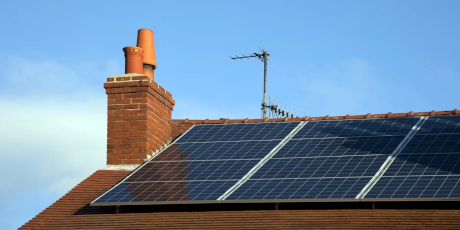All you need to know about putting solar panels on your roof 22 Feb 2023

Analysis: you can expect a simple system of six to eight solar panels to generate about one third of your home's electricity needs - Dr. Paul Deane, Senior Research Fellow, Energy Policy & Modelling, MaREI Centre/ERI
This article is now available above as a Brainstorm podcast. You can subscribe to the Brainstorm podcast via Apple Podcasts, Stitcher, Spotify or wherever you get your podcasts.
The proverb "Give a man a fish and you feed him for a day; teach him to fish and you feed him for life" has an unlikely resonance in the current fossil fuel crisis, especially when it comes to measures than are needed to help homeowners deal with soaring electricity costs. While giving someone a rebate or discount on their energy bill will help them once, giving them the power to generate their own electricity will endure for their lifetime. This is where an unlikely electricity source for Ireland, in the form of sunshine, could be a lifeline to many families struggling to pay energy bills.
Ireland is known more for wind and waves rather than sunshine, but advances in solar technology and reductions in cost now make it an attractive option for residential electricity generation in Ireland. Solar panels that produce electricity are known as solar photovoltaic (PV) modules. These panels generate electricity when exposed to light and it has been one of the fastest growing power generation technologies worldwide.
The systems produce electricity that can be used to power your home appliances and heat water via your immersion. The homeowner won't notice any difference in how appliances work and there is no need to notify or change your electricity supplier.
Naturally, solar systems need sunlight to work but most will still function on overcast days in Ireland although not at their full capacity. You can expect a simple system of six to eight panels on your roof to generate about one third of your annual electricity needs, with most of this between the months of May and September. This means you will still be relying on your electricity supplier, especially in winter and darker months, but you will be buying less electricity from them overall.
Solar PV systems are sized in technical units called kilowatts (kW) and a simple 2.4kW system would have about six to eight panels. Most small systems of this size do not need planning permission, but you should check with your local authority as rules differ from location to location.
While the fuel in the form of sunlight is free, the installation of the panels isn’t and will cost about €4,000 for a simple system with six to eight panels [2.4kW]. There is a Government grant available to help reduce costs, bringing the overall price down to about €3,000. These are ballpark costs and will vary from supplier to supplier. If you are interested in getting solar panels, it is very important to shop around for several quotes and use a reputable certified installer.
A typical home with six to eight solar panels on the roof could save about €400 per year in electricity bills, with the system paying back for itself in seven to 10 years. The deployment of residential solar PV in Ireland addresses key energy and climate issues such as affordability but also helps Ireland at a national level in terms of Increasing security of supply and reducing the pollution from greenhouse gas emissions.
In UCC, we carried out a study, funded by the Irish Solar Energy Association, to understand how many homes can use sunlight to generate electricity. We were surprised to find that about half the homes in Ireland have potential for this technology and, if all this was achieved, we could produce enough electricity to meet a quarter of all residential electricity demand.
But there are very real challenges in rolling out this technology at scale at a national level. For a start, there is a shortage of skilled workers to do the work. Furthermore, while the economic and environmental arguments for the technology are very compelling, it still requires a significant upfront investment by the homeowner.
In this regard SEAI have a range of grants available to homeowners to reduce costs, but many families will still find the investment prohibitive. This is where Government policy needs to intervene and provide 100% grants to fund solar panels for homes in receipt of fuel allowance as low-income families need the highest level of financial protection during this crisis.
To get the best out of your panels, you will also have to change some behaviours about when you use appliances such as dishwashers and washing machines. If you have a solar system, it is best run these appliances when the sun is shining
READ: Do you want to produce your own electricity?
While some homeowners will look to put in a battery system to store any excess electricity, this adds to the costs. However, if you have a hot water or immersion tank, you can set up your solar system to divert surplus electricity to heat your water. In essence this acts like a battery and stores the electricity as hot water, which can be used to offset the use of the immersion for hot showers etc.
Any remaining electricity can be exported to the grid and homeowners can now get paid a small fee for this. But with current high electricity prices, it is best to use as much of your solar generated electricity in your own home as possible.